Green beans are a popular and nutritious vegetable found in many dishes worldwide. To fully enjoy their flavors, textures, and health benefits, it’s important to know how to store green beans in the refrigerator properly. Proper storage not only maintains their freshness but also extends their shelf life, giving you more time to appreciate this tasty vegetable.
In this article, we will delve into the best practices and expert tips for storing green beans in the refrigerator, ensuring that you always have fresh, crisp, and delicious green beans at your disposal.
Understanding the Importance of Proper Storage
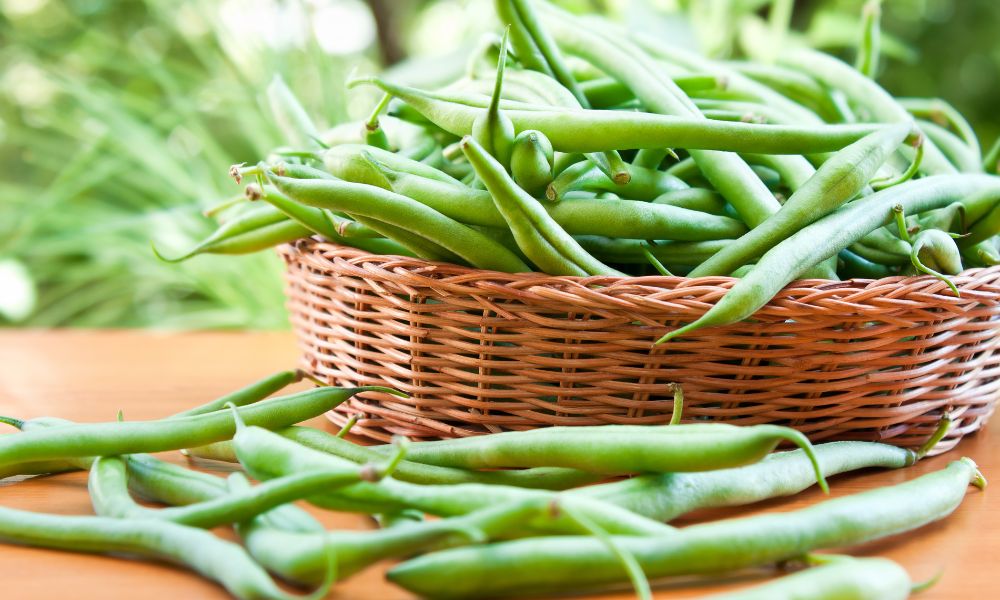
Before diving into the details of refrigerating fresh green beans, let’s examine why proper storage is so essential to preserving their taste and texture. Green beans, like any fresh produce, begin to deteriorate as soon as they are picked. They lose their natural crispness and vibrant green color and can even become slimy and unpleasant to eat. By storing them correctly, you can prolong their shelf life and enjoy their unique flavor for a longer period.
Storing green beans the right way also has additional benefits, such as:
- Preventing food waste by ensuring you can eat all the green beans before they spoil.
- Saving money by avoiding the need to buy new green beans.
- Enjoying the maximum nutritional value, as fresh green beans contain more vitamins and minerals compared to wilted or spoiled ones.
Preparing Green Beans for Refrigerator Storage
Before placing green beans in the fridge, it’s essential to prepare them correctly. This simple yet vital step ensures that they stay in the best possible condition during storage. To prepare green beans for refrigeration, follow these steps:
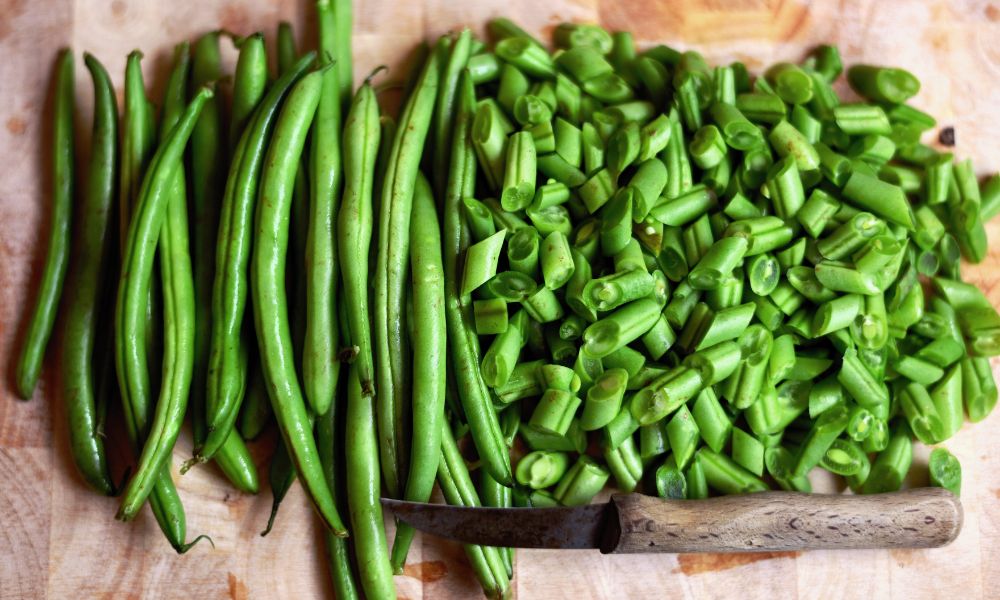
- Wash the green beans gently under cold running water to remove any dirt, pesticides, or other contaminants. Be sure not to soak them, as excess moisture can lead to faster spoilage. You can use a colander or a salad spinner to make this process easier.
- Inspect the green beans and remove any blemishes or damaged parts. Damaged areas can harbor bacteria that may cause the food to spoil faster.
- Trim the ends. While it’s not strictly necessary, trimming the ends can make it easier to store and cook the green beans later on. Additionally, removing the pointed tips can improve the beans’ overall appearance and uniformity. You can do this using a knife or kitchen shears.
- If you prefer, cut the green beans into desired sizes. This step is entirely optional, and you can leave them whole if you like. Cutting them, however, can make them more convenient to use later on in your cooking process.
Remember that it’s crucial to keep the green beans as dry as possible before storing them in the refrigerator. Excess moisture can encourage bacterial growth and spoilage. Once the beans are prepared, it’s time to select the right storage container.
Selecting the Right Storage Container

Choosing the appropriate container in which to store your green beans is critical for maintaining their freshness while in the fridge. The container you select should help preserve the crispness of the green beans and provide protection against moisture and contaminants. Here are some recommendations for ideal storage containers:
- Airtight plastic bags: These bags are an excellent option, as they keep the green beans fresh and crisp while preventing excess moisture from entering. When using plastic bags, be sure to remove as much air as possible before sealing them. A tightly sealed bag helps maintain the green beans’ freshness while avoiding the risk of freezer burn if you choose to freeze them for long-term storage.
- Sealed containers: A durable, BPA-free plastic container with a tight-fitting lid can also serve as an effective storage option. Ensure the container is clean and dry before placing the green beans inside to minimize the risk of spoilage due to moisture or bacteria.
It’s crucial to select containers that are both clean and dry, as moisture buildup can lead to spoiled or soggy green beans. After choosing the right container, it’s time to consider the proper placement of your green beans within the refrigerator.
Proper Placement in the Refrigerator
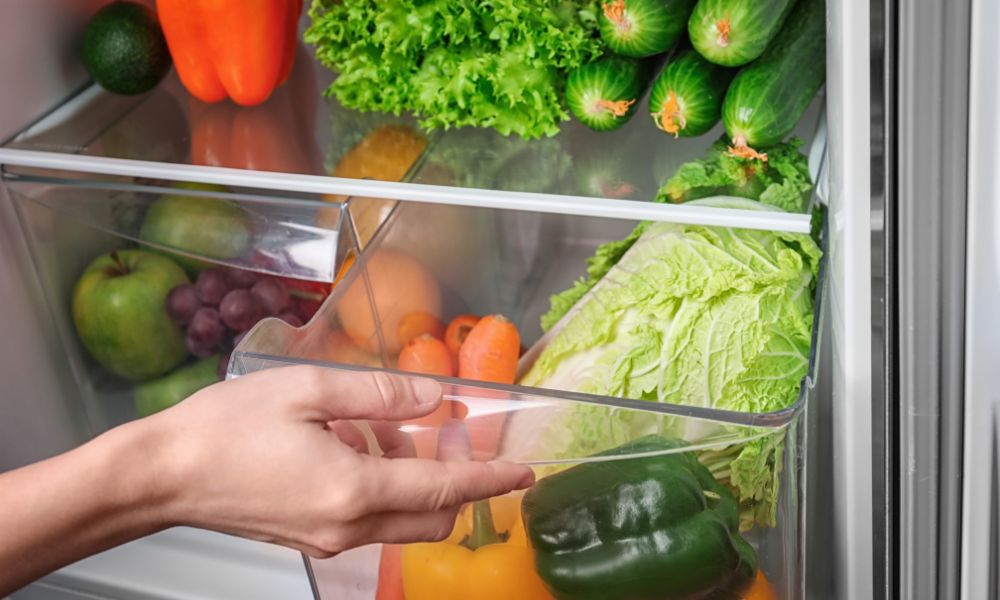
Choosing the best location in your refrigerator for storing green beans can significantly impact their freshness and shelf life. You’ll want to ensure that they are stored in a consistent, cool environment with a stable temperature.
Most experts recommend placing green beans in the crisper drawer of your refrigerator, as these drawers are designed to maintain a higher humidity level that is optimal for preserving fresh produce. Additionally, the crisper allows you to separate green beans from other fruits and vegetables to prevent cross-contamination.
Keep in mind that some fruits and vegetables produce ethylene, a natural gas that can cause other produce items (including green beans) to ripen and spoil more quickly. Be sure to avoid storing green beans near ethylene-producing fruits and vegetables such as apples, tomatoes, and avocados.
Ideal Temperature and Humidity Levels
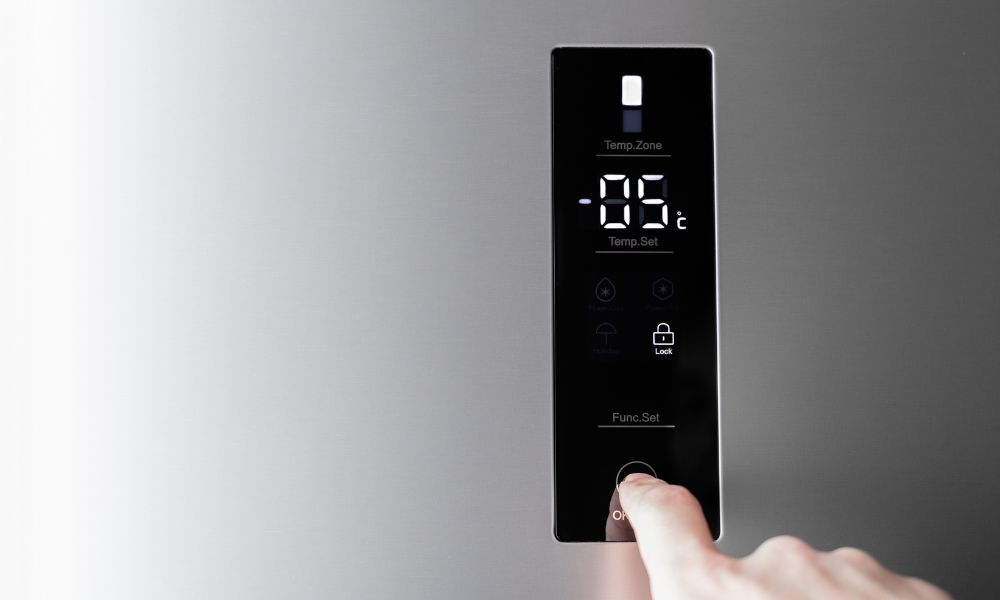
Maintaining the appropriate temperature and humidity levels within your refrigerator is essential for prolonging the shelf life of your green beans. Green beans thrive in a cool (but not too cold) environment, as high temperatures can accelerate spoilage, while freezing temperatures can damage their texture.
According to the United States Department of Agriculture (USDA), the recommended temperature for storing green beans in the refrigerator is between 40°F-45°F (4.4°C-7.2°C). This temperature range ensures that green beans stay crisp and fresh, without risking damage due to freezing.
The optimal humidity level for green beans is also important, as it helps maintain their freshness and prevents them from becoming limp. Most refrigerators’ crisper drawers have adjustable humidity controls or vents, which can be adjusted to achieve the ideal humidity level. For green beans, it is best to maintain a humidity level of 95%. If your refrigerator does not have adjustable humidity controls, placing a damp paper towel in the crisper drawer can help maintain the necessary humidity level.
If you need to adjust the temperature or humidity settings in your refrigerator, be sure to consult the owner’s manual for guidance. By maintaining the optimal temperature and humidity levels, you’ll maximize the freshness and shelf life of your green beans.
Maximizing Shelf Life
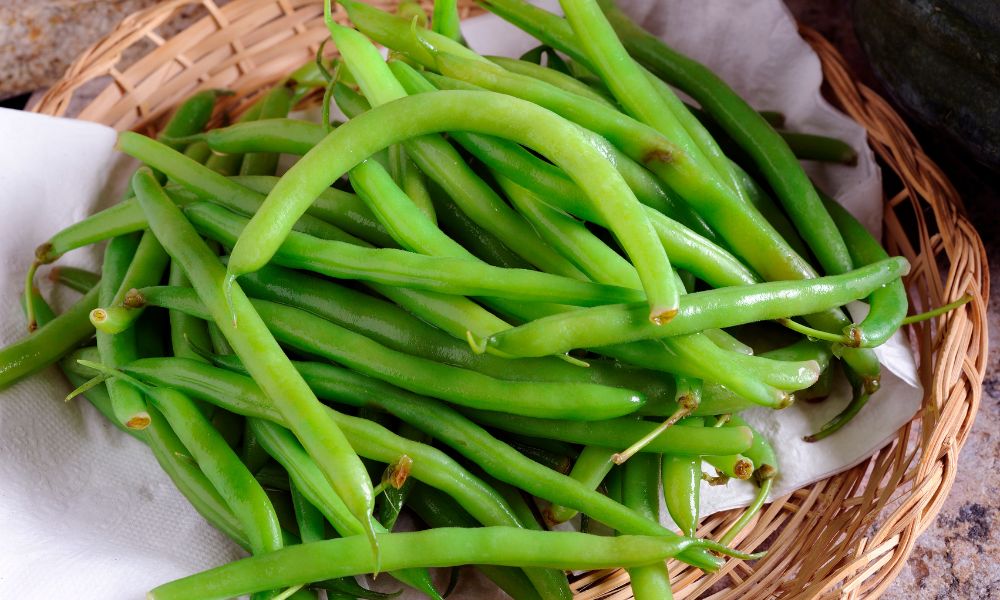
The typical shelf life of green beans stored in the refrigerator properly is 7-10 days. This duration depends on factors such as the freshness of the green beans when they were purchased, their preparation, and the conditions within the refrigerator.
To maximize their shelf life and get the most out of your tasty green beans, keep these suggestions in mind:
- Inspect the green beans regularly to ensure they are still fresh, crisp, and free of any signs of spoilage or damage.
- Ensure that the temperature and humidity levels within the refrigerator are maintained at the optimal settings recommended in the previous section.
- Avoid opening the refrigerator door too frequently or storing the green beans close to the door, as this can cause temperature fluctuations that may reduce their shelf life.
It’s also important to recognize when your green beans have begun to spoil, so you can discard them before they affect other produce in your fridge. Common signs that indicate green beans are past their prime include:
- A noticeable, unpleasant odor
- Dark or slimy spots
- Loss of their vibrant green color, turning yellow or brown
- A mushy, wilted texture
FAQs
When it comes to storing green beans in the refrigerator, several common questions may arise, which we’ll address below:
How long can green beans be stored in the refrigerator?
When stored properly, green beans can be stored in the refrigerator for 7-10 days. Their freshness depends on several factors, such as their initial quality, preparation, and the temperature and humidity settings inside your fridge.
Can you freeze green beans for long-term storage?
Yes, green beans can be frozen for long-term storage. To do this, it’s best to blanch them first by boiling them for 2-3 minutes and then quickly cooling them in an ice bath. This process helps maintain their color, texture, and nutritional value. After blanching, pat the green beans dry, and place them in airtight freezer bags or containers, ensuring that you’ve removed excess air before sealing. Green beans can be stored in the freezer for up to 12 months.
Can cooked green beans be refrigerated?
Yes, you can store cooked green beans in the refrigerator. They should be cooled completely before being placed in a clean, airtight container. Cooked green beans can last approximately 3-5 days when stored properly in the fridge.
Conclusion
In summary, storing green beans in the refrigerator requires some attention to detail and adherence to proper storage practices. By understanding the importance of correct storage, preparing your green beans accordingly, selecting the right container, ensuring proper placement, maintaining the ideal temperature and humidity levels, and maximizing shelf life, you’ll be well-equipped to keep your green beans fresh and delicious for an extended period.
By following these guidelines, you can confidently enjoy your favorite green bean dishes while minimizing waste and getting the most value from your produce. Remember to monitor the freshness of your green beans and be aware of the signs that indicate they might be past their prime. With these best practices in hand, you’ll be well on your way to savoring the flavors and nutritional benefits of fresh, crisp green beans in every meal.








